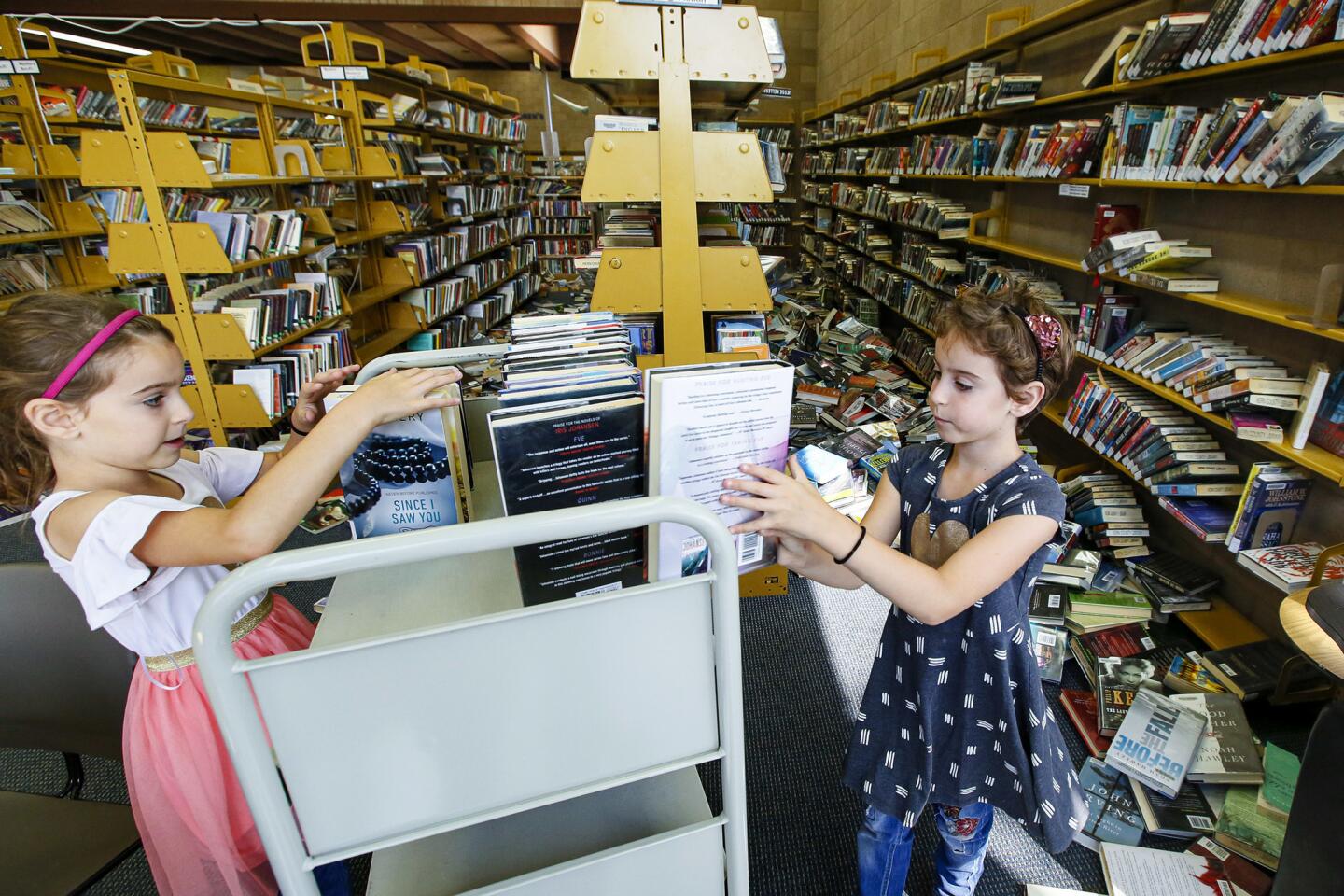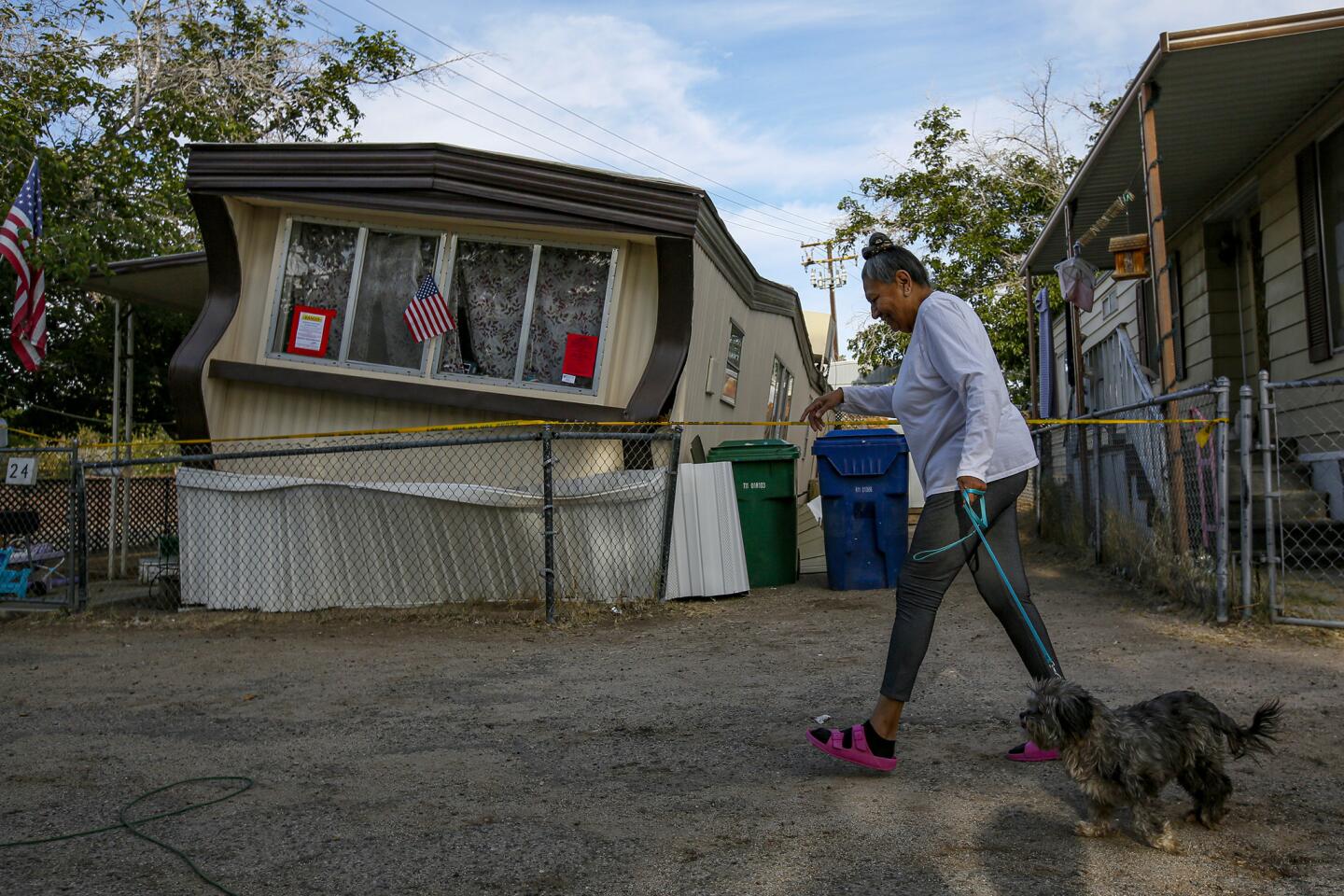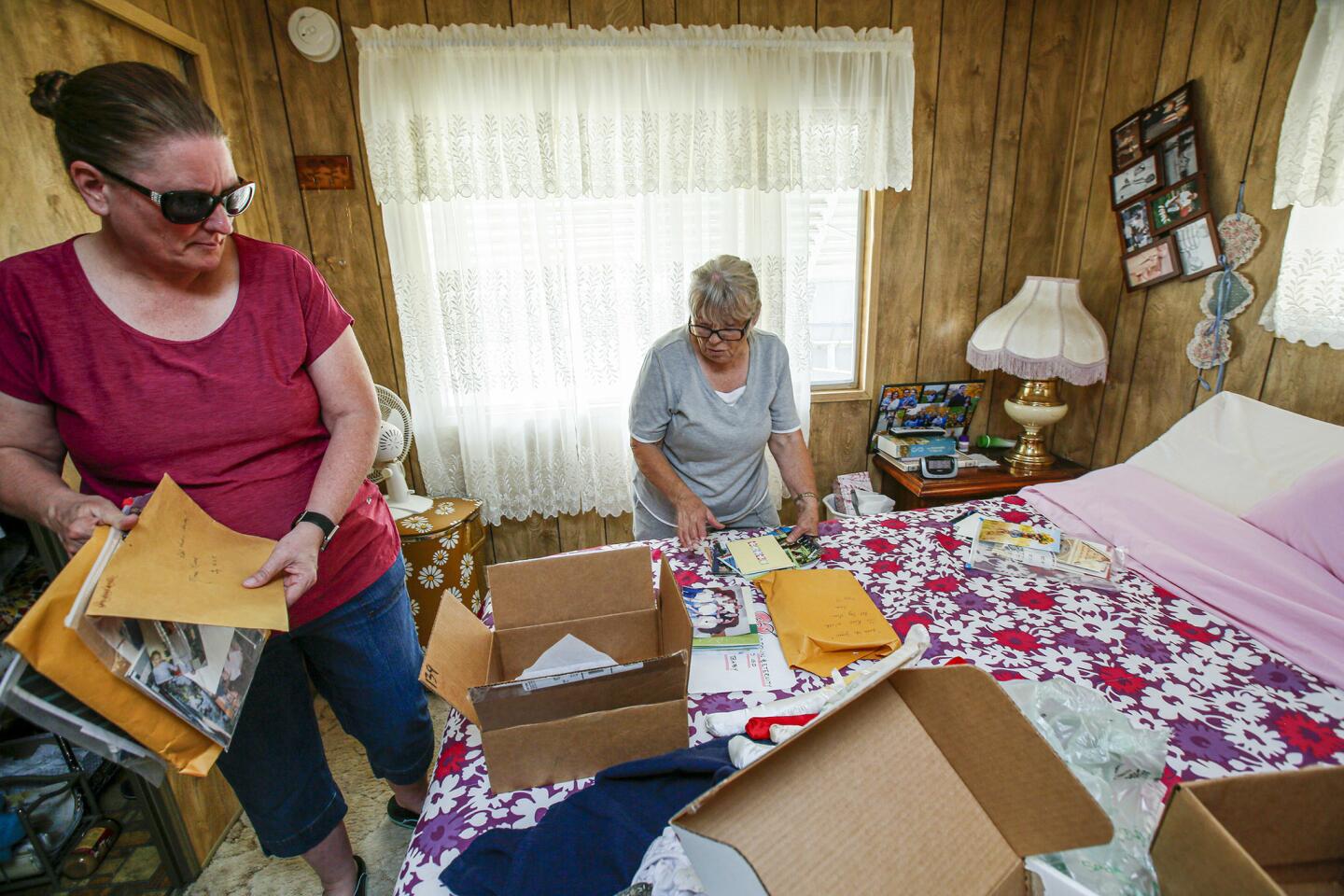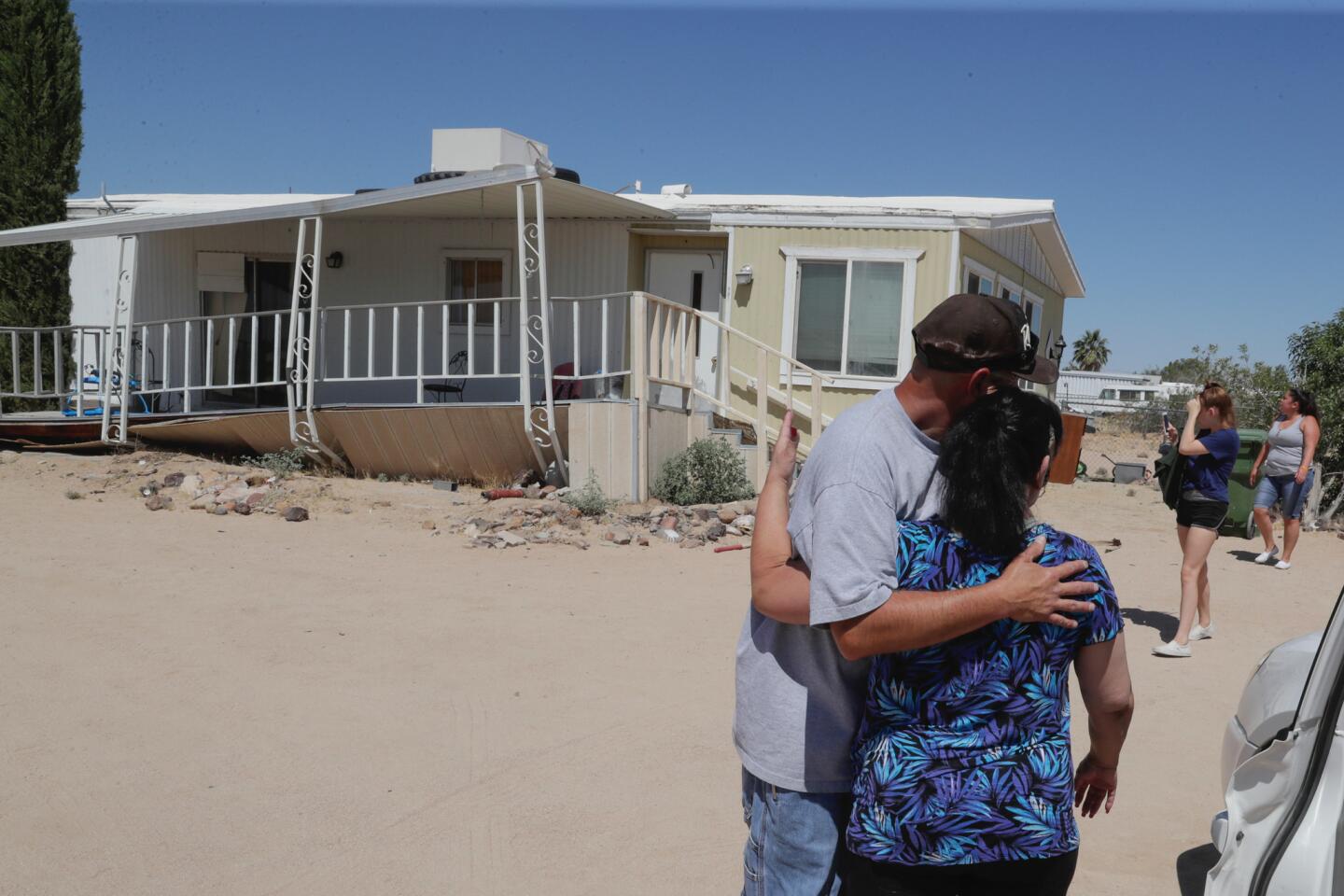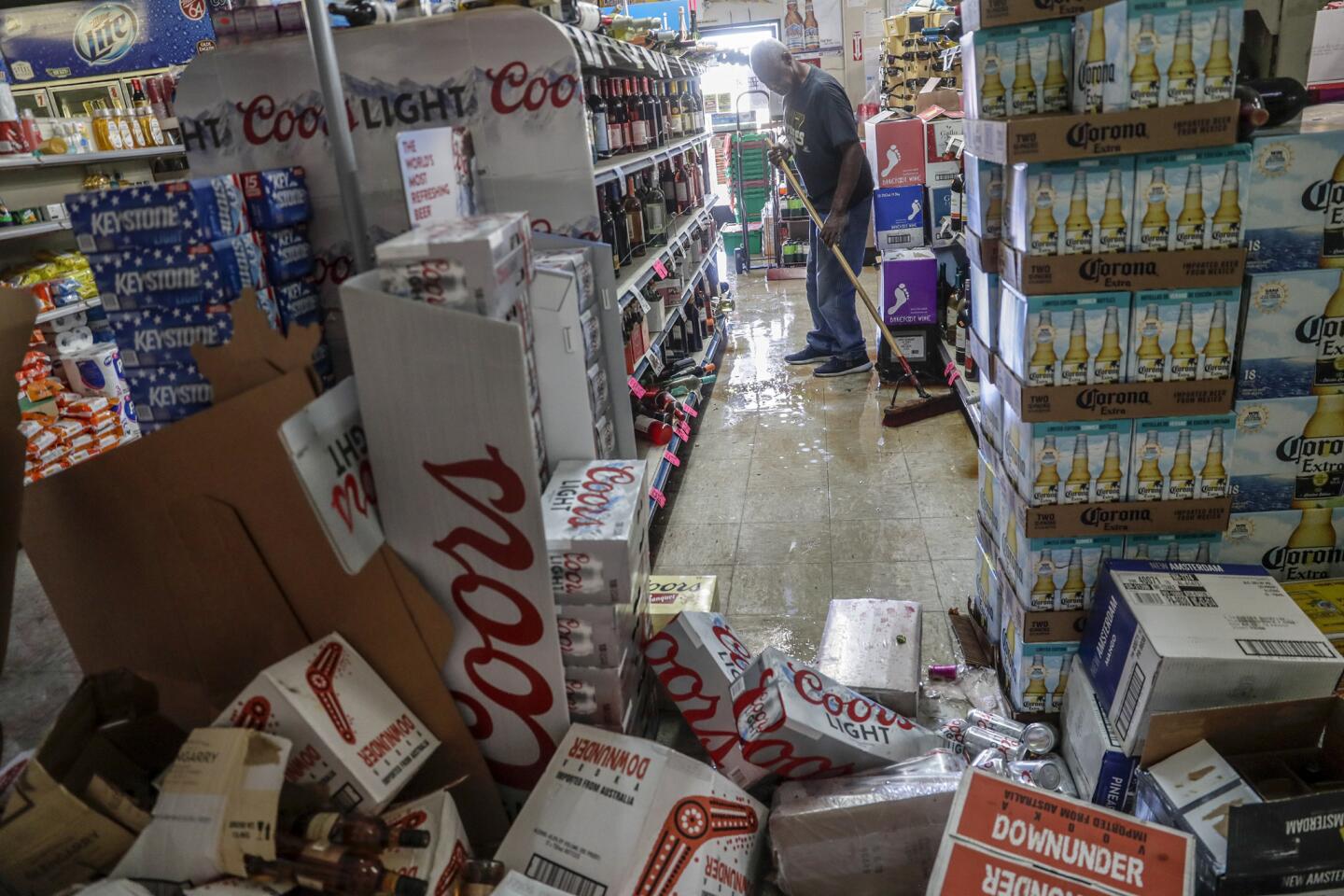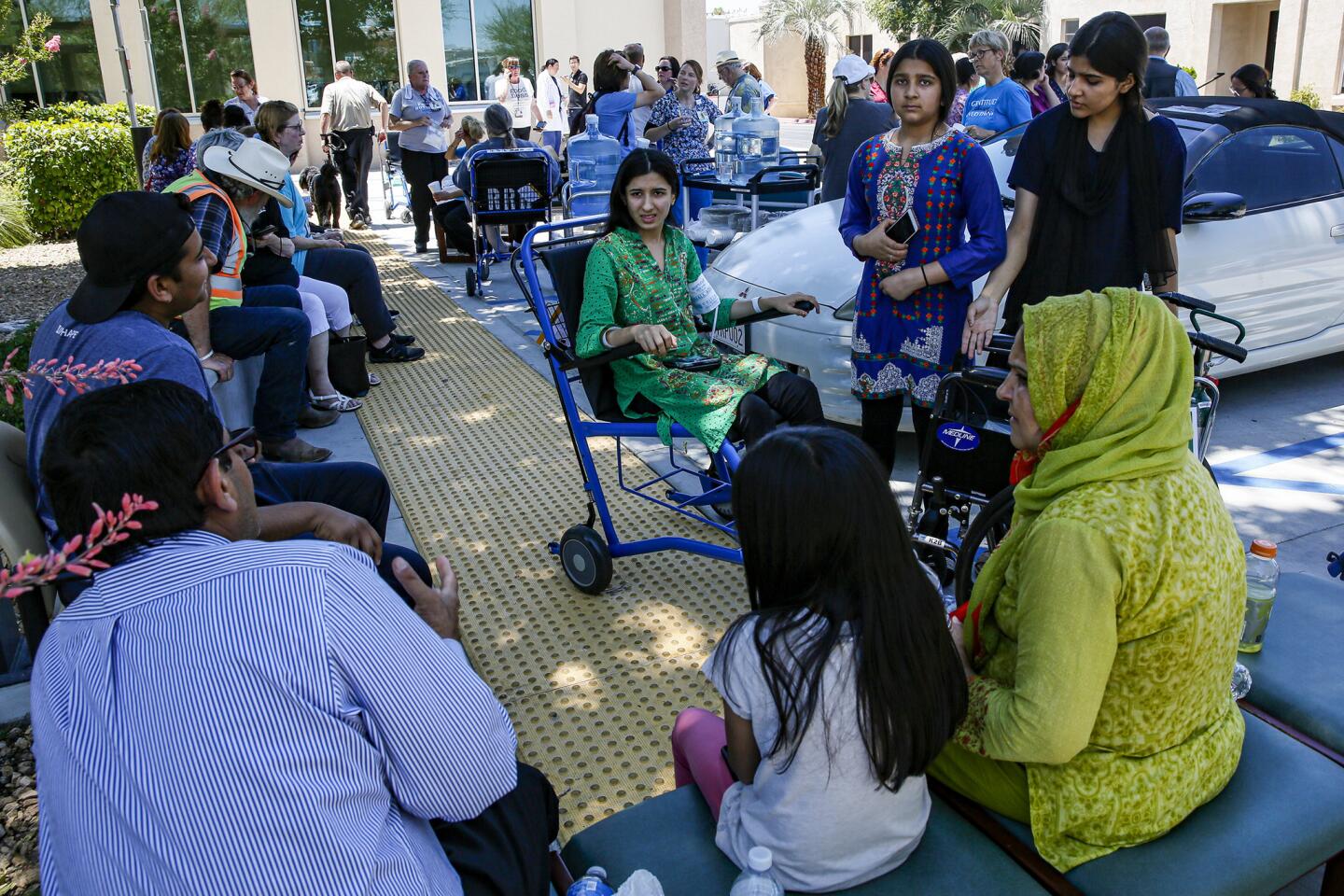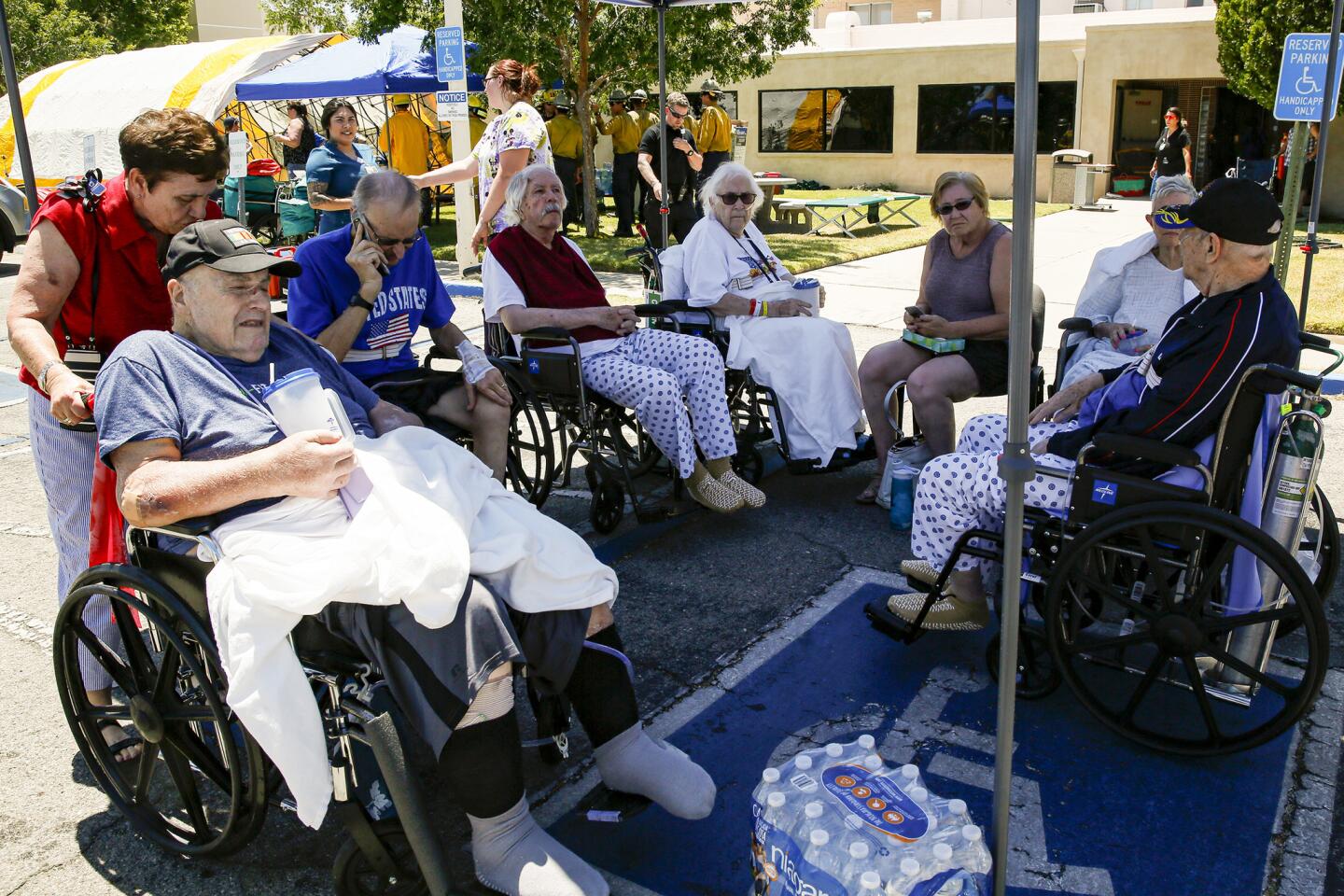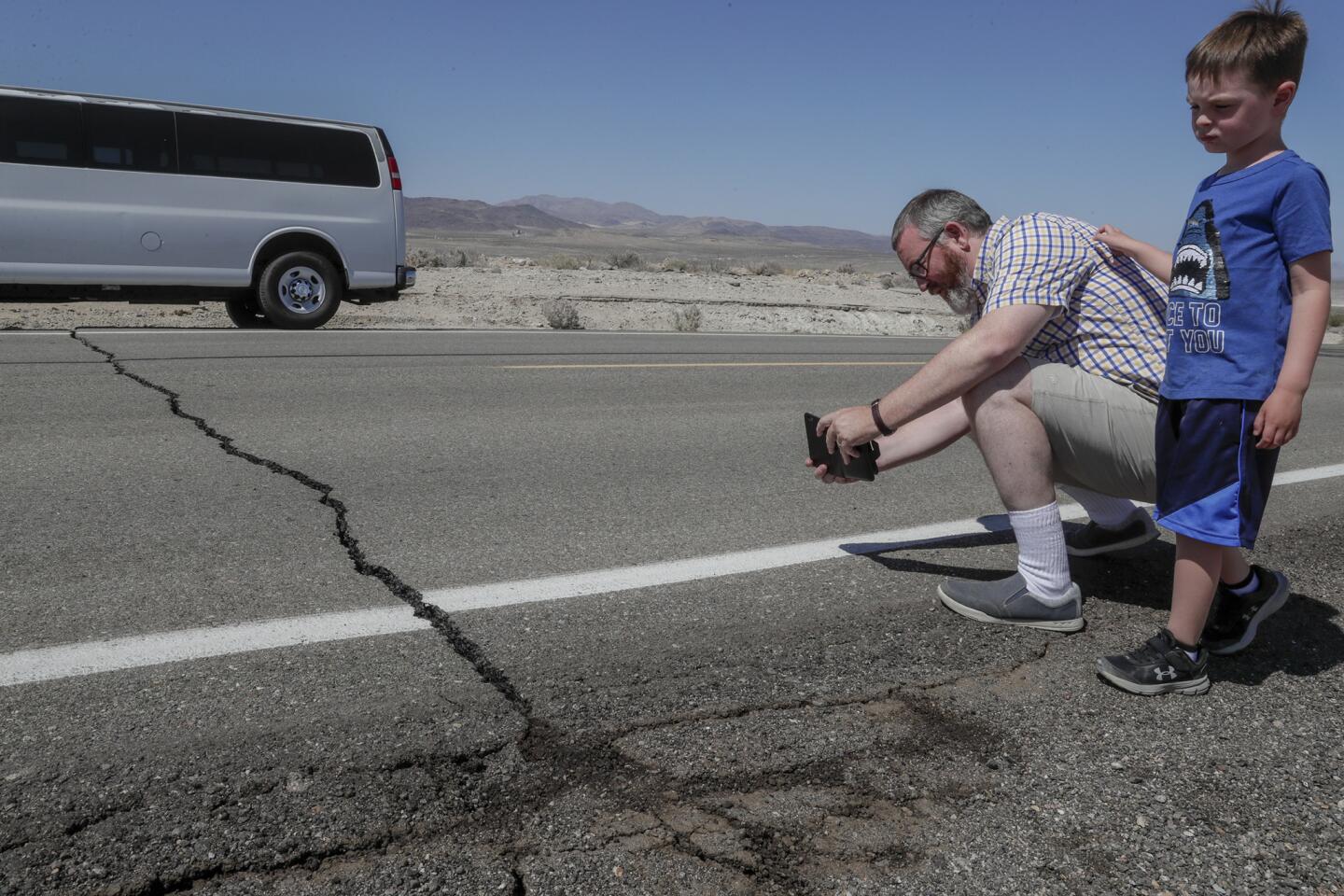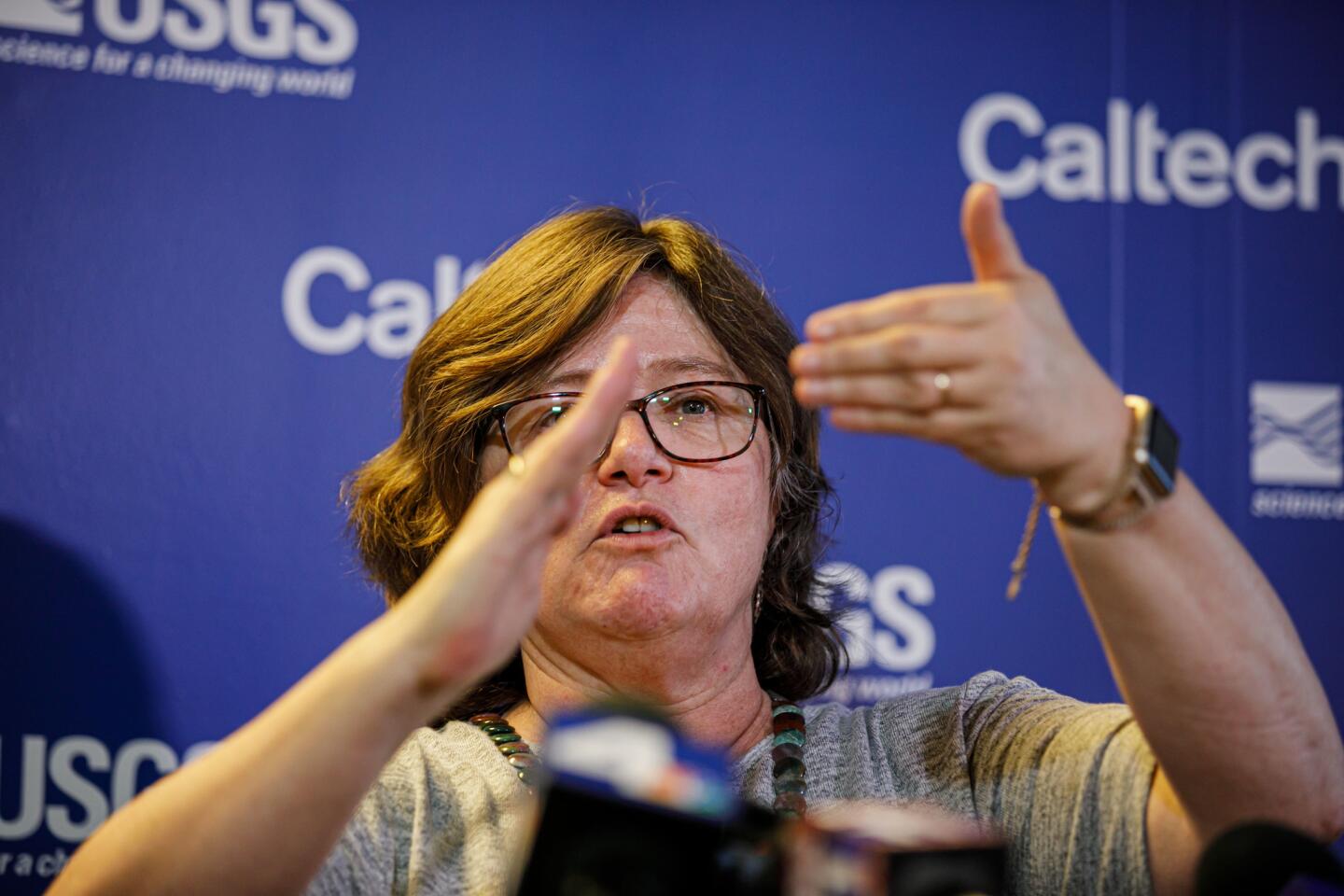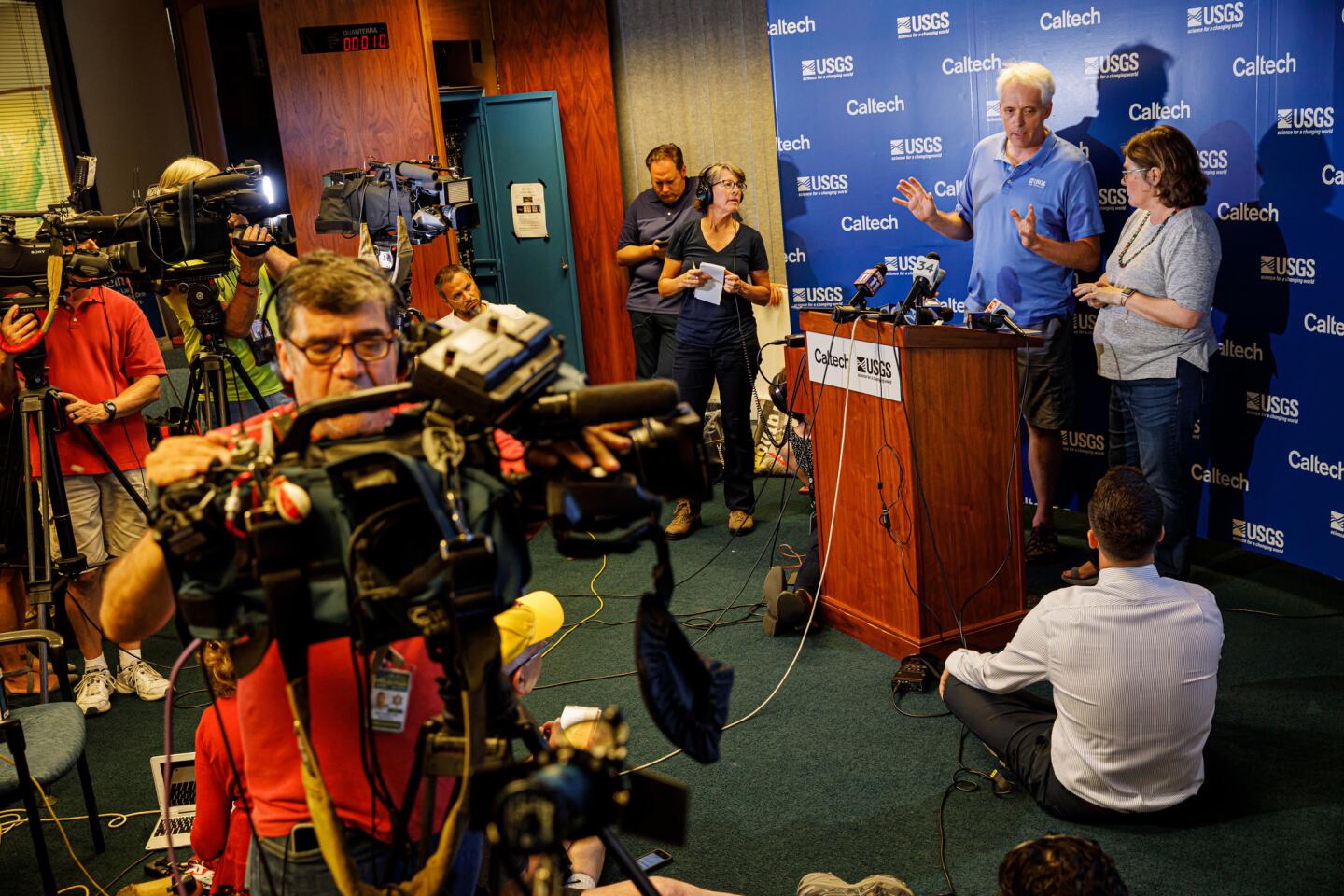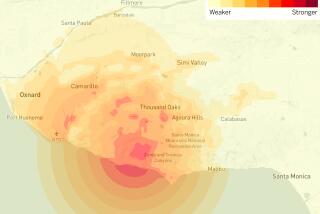‘Your house is gone.’ Ridgecrest residents survey damage after powerful earthquake jolts Southern California
Bill Sturgeon sat alone at his kitchen table on Friday surveying the damage unleashed on his longtime home in Ridgecrest a day earlier by the largest earthquake to strike the region in years.
Beads of sweat ran down his face as he pointed to a pile of shattered glass and broken planks of wood that lay on the warped floor, wreckage from the magnitude 6.4 temblor that picked up his Trousdale Estates mobile home and slammed it back to the ground, knocking it off its foundation.
“That hutch there held 40 years worth of knickknacks promised to our grandchildren,” he said.
Sturgeon, 79, has lived in the mobile home with his wife for 20 years. But after Thursday’s quake, county officials decided the home is no longer safe to occupy. Red-tag notices are displayed prominently on the property’s front windows, tilted from the temblor.
Sturgeon and his wife, Charlotte, 78, were at a Fourth of July event at a local high school when the shaking started. The venue was evacuated and when they returned home, their granddaughter was already there to deliver the devastating news.
“As I pulled onto the street, my granddaughter was there and she said ‘Grandma, I have bad news for you. Your house is gone. It’s totaled,’” Charlotte Sturgeon said, her voice breaking. “I thought she was teasing. I said ‘Oh no, no.’ But she was right.”
A day after the earthquake — centered about 125 miles northeast of Los Angeles in the remote Searles Valley area — damaged a handful of structures and left a large crack in the middle of California 178, Ridgecrest residents did their best to move forward despite the consistent aftershocks that continued to rattle them.
FULL COVERAGE: 6.4 July 4 Southern California earthquake »
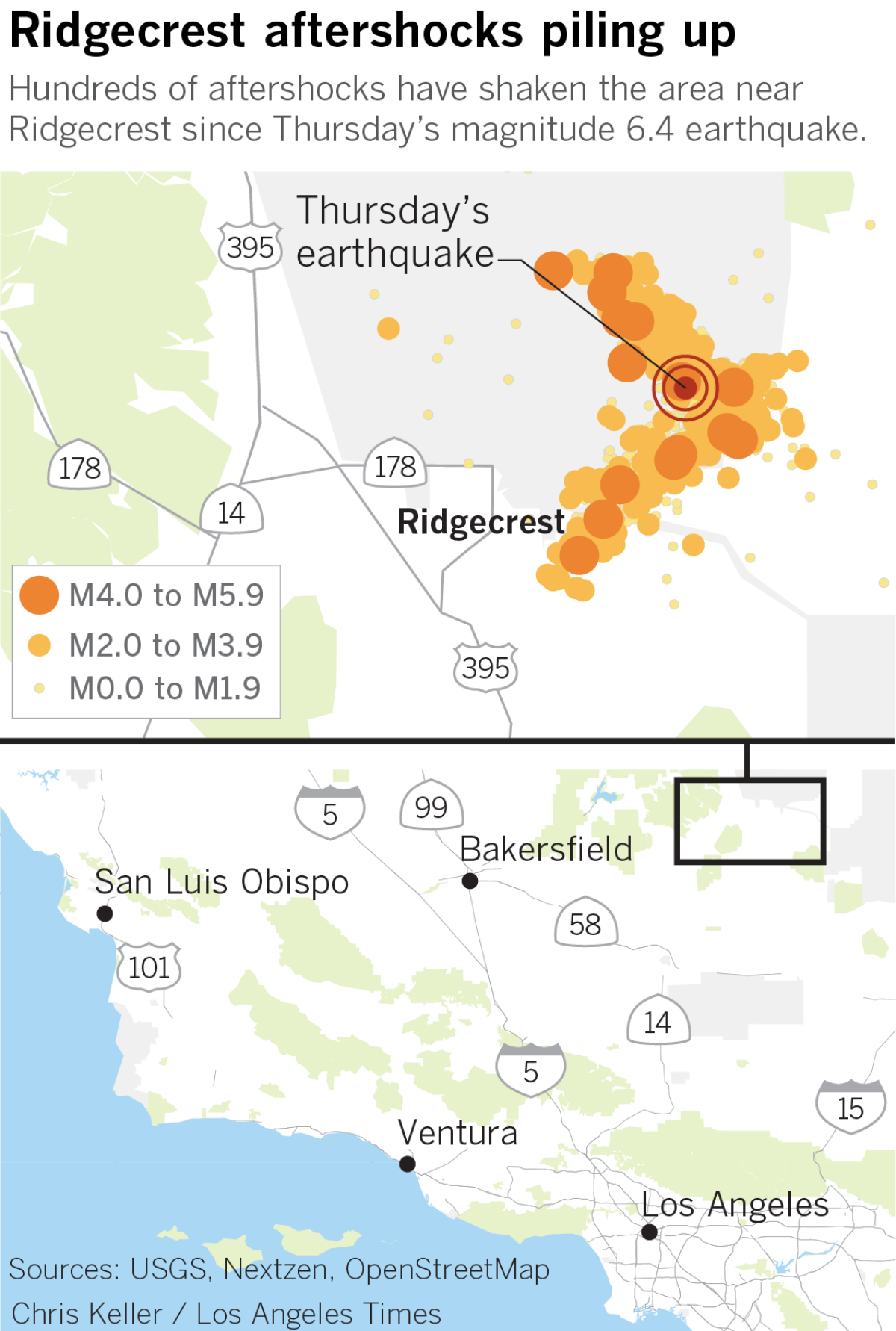
The powerful quake ruptured for 10 miles on a fault that began in the remote Mojave Desert and headed southwest toward Ridgecrest, Calif., a city of 29,000 people, stopping just short of the city limits, Caltech seismologist Egill Hauksson said. The temblor shook communities from Las Vegas to Long Beach and ended a quiet period in the state’s seismic history. It was felt as far away as Ensenada and Mexicali in Mexico, Phoenix, Reno and Chico, Calif.
The aftershock sequence was decaying at a rate typical for other Southern California earthquakes, Hauksson said. But he warned that the aftershock sequence would last months, if not years.
The strongest aftershock temblor — a magnitude 5.4 aftershock — struck at 4:07 a.m. Friday five miles from Ridgecrest and was felt as far away as Laguna Hills, San Bernardino, Fresno and Las Vegas, according to crowdsourced reports on the USGS’ “Did You Feel It?” website. The aftershock quake, at a depth of 4.3 miles, began 10 miles northeast of Ridgecrest, 70 miles northwest of Barstow and 125 miles northeast of Los Angeles – and was strong enough to awaken some people in downtown L.A.
RELATED: 4th of July earthquake won’t delay the Big One. And it might have worsened quake strain »
The odds are good that there will be another aftershock of magnitude 5 or above will come, Hauksson said, but no one knows for sure if it’ll come tomorrow or perhaps years from now. The aftershock sequence after the magnitude 6.7 Northridge earthquake of 1994 lasted for years.
There’s also the possibility of stronger aftershocks. On Thursday, USGS and Caltech scientists said for the week following the July 4th quake, there was a 20% chance of an aftershock of magnitude 6 or greater, and a 9% chance of an aftershock even larger than the Independence Day temblor.
By midday, there have been at least 17 magnitude 4 aftershocks since the mainshock, and at least 1,200 aftershocks.
Just a few hours after Friday’s jolt, businesses were slowly coming to life in Ridgecrest as people began arriving at stores to grab emergency supplies.
Employees inside the Walmart Supercenter had worked through the night, clearing spilled products from the aisles following the previous day’s quake. They had gathered shortly after 4 a.m. to discuss the day’s plans when the shaking started again. They froze, ready to run outside, but the rumbling quickly subsided.
“They were panicking,” said store employee Jeremiah Jones, 40. “Just imagine, you just cleaned it all up. Here we go again. That’s a pain.”
Unlike a day earlier, items stayed on the shelves, and no major cleanup was necessary.
Jones had been placing heavy packages of onions on a top shelf inside the store’s produce storage room when the first quake hit Thursday. His colleague, who was standing nearby, was jostled, so Jones grabbed her and pulled her toward the ground.
Why L.A.’s early warning system didn’t send an alert before the magnitude 6.4 quake »
“I actually saved her. She was getting thrown around like doll,” he said. “I was like, ‘No, get on the ground.’ We saw everything in the back getting tossed everywhere. I lucked out. It was bad.”
When the quake hit, the store’s customers all ran out, and employees were left to assess the damage. Nearly everything had fallen from the shelves. Glass liquor bottles shattered on the floor. Food and toiletries were piled up so high across the aisles that employees couldn’t walk to the other end.
“Oh, my God, it was a disaster,” Jones said. “I never thought they would have got it done by today. Every aisle had stuff thrown off the shelves. This store was a straight disaster.”
But by Friday morning, the Walmart was spotless, all evidence of the quake erased. The floors were clean, and items were neatly organized on their shelves. Dozens of employees walked the aisles completing finishing touches and chatting about the chaotic day.
Scientists from the U.S. Geological Survey, California Geological Survey and elsewhere were already fanning over the area, documenting how the ground was literally broken by the earthquake, including with preliminary reconnaissance by helicopter. There’s some complication given that the rupture continues on to the Naval Air Weapons Station China Lake, a sprawling facility larger than the size of Rhode Island, and it’s taking time to secure permission to analyze the broken ground on the Navy property.
Photos already indicate that in some places along the ruptured fault, one side of the earth moved past the other by perhaps 6 to 8 inches, said Rob Graves, research geophysicist with the USGS.
In other areas, there’s a broad zone of deformed earth distributed over perhaps a couple of hundred feet on either side of the fault, Graves said.
RELATED: ‘Alcohol was just flooding the aisle’: Ridgecrest market has lots to clean after quake »
An average of five earthquakes with magnitudes between 5.0 and 6.0 occur each year in California and Nevada, according to a recent three-year data sample. Before Thursday, it had been almost five years since the state experienced an earthquake of magnitude 6.0 or stronger. Experts had said the period of calm was sure to end, and when it did, it would likely bring destruction.
The Sturgeons admit they weren’t completely prepared for the earthquake. They didn’t purchase earthquake insurance and don’t have the funds to repair the damage to their home.
RELATED: Ridgecrest earthquake was intense. Exactly how strong was it? »
The couple, who spent the night at their nephew’s home, returned early Friday to pack up some essential belongings. Their neighbors and members of their church gathered in the street outside under a canopy to offer condolences and lend a hand. A police cruiser pulled up shortly after they arrived, followed by a code enforcement officer who reminded Bill Sturgeon that his house wasn’t safe and he shouldn’t go inside.
Sturgeon said he understood, but wasn’t deterred. He shuffled his feet, preparing to spend the next few hours cleaning up what was left of his home.
“Ever since this happened, I’ve had so many people telling me what to do,” Sturgeon said. “I guess I’m just old and ornery. I get tired of being told ‘You can’t. You can’t. You can’t.’ It’s my house. It’s my body.”
Diaz and Reyes-Velarde reported from Ridgecrest. Fry reported from Los Angeles. Lin reported from Cape Town, South Africa. Times photographer Irfan Khan contributed to this report.
More to Read
Start your day right
Sign up for Essential California for news, features and recommendations from the L.A. Times and beyond in your inbox six days a week.
You may occasionally receive promotional content from the Los Angeles Times.

